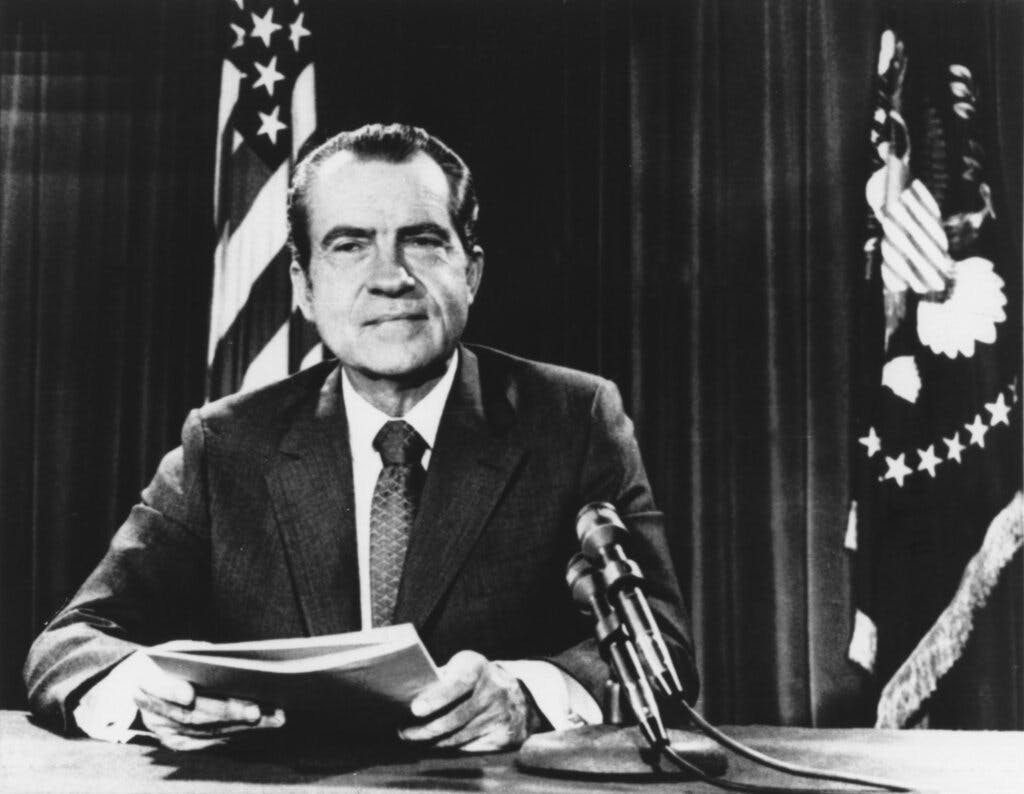Inflation in Context
Nixon’s failure to maintain monetary discipline in 1971 triggered an inflationary wave, just as today’s persistently high price increases can be traced to the laxity of President Biden and his fellow Democrats.

When on Tuesday morning the latest inflation numbers are announced, the thing to keep in mind will be the context of 1971, when President Nixon cut the last connection between the dollar and gold. While the January report of the Consumer Price Index could show an improvement over the prior year — economists forecast price inflation will come in at 6.2 percent, versus 6.5 percent in December — that’s still a pace not seen in 40 years.
Either way, that’s settling for a higher rate of price increases than that which forced Nixon to close the gold window and end the Bretton Woods era. That was the era in which America promised to redeem dollars presented to it by foreign governments at a 35th of an ounce of gold. In 1970, inflation had risen 5.8 percent, an aberration over the annual average of 2.4 percent between 1950 and 1970.
It was Nixon’s choice to default on America’s promise to maintain an honest dollar rather than tackle inflation head on — and ensure that our gold reserves were adequate to meet our obligations. Nixon, explains economist Jeffrey Garten, “thought that severing the gold link would devalue the dollar in relation to other currencies and boost American trade.”
Nixon bet that terminating Bretton Woods, along with tax cuts and a freeze on prices and wages, would “stop the rise in the cost of living.” For a little while, it worked. In 1972, inflation rose by just 3.3 percent. Yet the abandonment of the gold standard’s discipline would unleash what was — until the Biden presidency — the worst wave of price increases in American history. Between 1971 and 1980, annual inflation averaged 7.9 percent.
The flat growth that accompanied the spiraling price increases required a new word to describe it — “stagflation.” It wasn’t until the appointment as Federal Reserve chairman of Paul Volcker, and the election of, in Ronald Reagan, a president committed to supply side measures against inflation, that price inflation came under control. In 1981, inflation rose 10.3 percent. By 1982, it was down to 6.1 percent, a level not seen again for 40 years.
The Great Inflation of the 1970s was the beginning of the age of the fiat-currency dollar. “Value was in the eye of the beholder, not in the price of gold,” Mr. Garten writes. The result has been a collapse in the dollar as measured in gold, the basis of monetary value. The greenback stands today at a little under an 1,858th of an ounce of gold, compared with a 35th of an ounce of gold under Bretton Woods.
Just as Nixon’s failure to maintain monetary and fiscal discipline in 1971 triggered an inflationary wave, today’s persistently high price increases can be traced to the laxity of Mr. Biden and his fellow Democrats — aided and abetted by the Federal Reserve. In early 2021, when the economy was already recovering from the pandemic, Mr. Biden’s stimulus bill flooded the economy with $1.9 trillion in unnecessary spending.
That in turn followed misguided policies by the Fed, like its experimental Quantitative Easing program that racked up trillions in asset purchases, and its commitment to keeping interest rates artificially low, fueling bubbles in the prices of real estate and stocks. Meanwhile, Mr. Biden has been contending the “data is clear” that inflation is on the run. Yet on Friday December’s report was revised upward, showing it rising, not falling.
So much for Mr. Biden’s claim that inflation is “coming down in America month after month, giving families some real breathing room.” The Fed is having a hard enough time bringing inflation down to its 2 percent inflation target while also facing pressure to settle for a higher pace — maybe 4 percent, or even 5 percent. Another signal that we won’t see real progress on the inflation challenge without the restoration of honest money.

